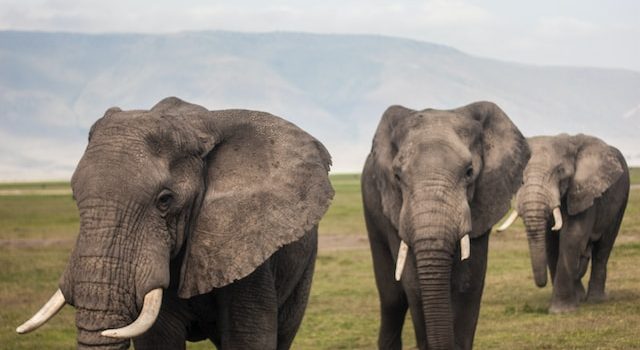
Introduction: While elephants are widely revered for their majestic appearance and complex social behavior, the intricacies of their sleep patterns and physiological processes remain a topic of fascination among researchers. Understanding the physiology of elephant sleep, including brain activity, REM sleep, and sleep cycles, unveils the remarkable adaptations of these magnificent creatures. In this article, we delve into the intricate world of elephant sleep to shed light on their unique physiological characteristics.
The Sleep Cycle of Elephants: Similar to humans and many other mammals, elephants experience distinct sleep cycles. These cycles encompass two main stages: rapid eye movement (REM) sleep and non-rapid eye movement (NREM) sleep. During REM sleep, characterized by rapid eye movements and heightened brain activity, dreams often occur. NREM sleep is further divided into multiple stages, ranging from light sleep to deep sleep. The interplay between these stages forms the sleep cycle, which repeats throughout the sleep duration.
Brain Activity During Sleep: Studies conducted on elephants have provided valuable insights into their brain activity during sleep. Electroencephalogram (EEG) recordings have revealed patterns of slow-wave sleep, characterized by low-frequency, high-amplitude brain waves. These slow waves indicate deep sleep and relaxation. Furthermore, elephants exhibit unique brain activity patterns during REM sleep, suggesting complex cognitive processes and potential dream states.
REM Sleep in Elephants: REM sleep, commonly associated with vivid dreams in humans, is a significant component of elephant sleep as well. Researchers have observed signs of REM sleep in elephants, including rapid eye movements and muscle twitches. This stage of sleep is vital for memory consolidation, emotional processing, and overall cognitive well-being. The presence of REM sleep in elephants suggests that they too experience dreams and potentially engage in cognitive processing during sleep.
Sleep Duration and Fragmented Rest: Despite their massive size, elephants have relatively short sleep durations compared to other mammals. On average, elephants sleep for about 2 to 3 hours per day, which is considerably less than what would be expected for their metabolic needs. This shortened sleep duration is attributed to their evolutionary adaptations, allowing them to remain vigilant in their often challenging and potentially dangerous environments. Additionally, their sleep is often fragmented into short bouts throughout the day and night.
The Role of Environmental Factors: Elephant sleep patterns are also influenced by various environmental factors. For instance, temperature fluctuations, the availability of resources, and the presence of potential threats affect their sleep duration and quality. In hotter climates, elephants may alter their sleep patterns, seeking shelter or water sources during the hottest parts of the day. Environmental disturbances, such as noise pollution or human activities, can disrupt their sleep and lead to sleep fragmentation.
Conservation Implications: Understanding the physiology of elephant sleep has important implications for their conservation and welfare. Preserving and restoring natural habitats that offer optimal sleep conditions, including peaceful surroundings and access to resources, is crucial for the well-being of these magnificent creatures. Reducing human disturbances, protecting migratory routes, and minimizing habitat fragmentation are key steps toward ensuring elephants have the opportunity to engage in their natural sleep patterns.
Conclusion: The physiology of elephant sleep unveils a world of remarkable adaptations and complex cognitive processes. From the distinct sleep cycles to the presence of REM sleep and the influence of environmental factors, elephants exhibit unique characteristics that contribute to their overall well-being. As we continue to unravel the mysteries of elephant sleep, it becomes increasingly evident that their sleep patterns are essential for their physical, cognitive, and emotional health. Preserving their natural habitats and understanding their sleep physiology is crucial for the conservation of these magnificent creatures.










